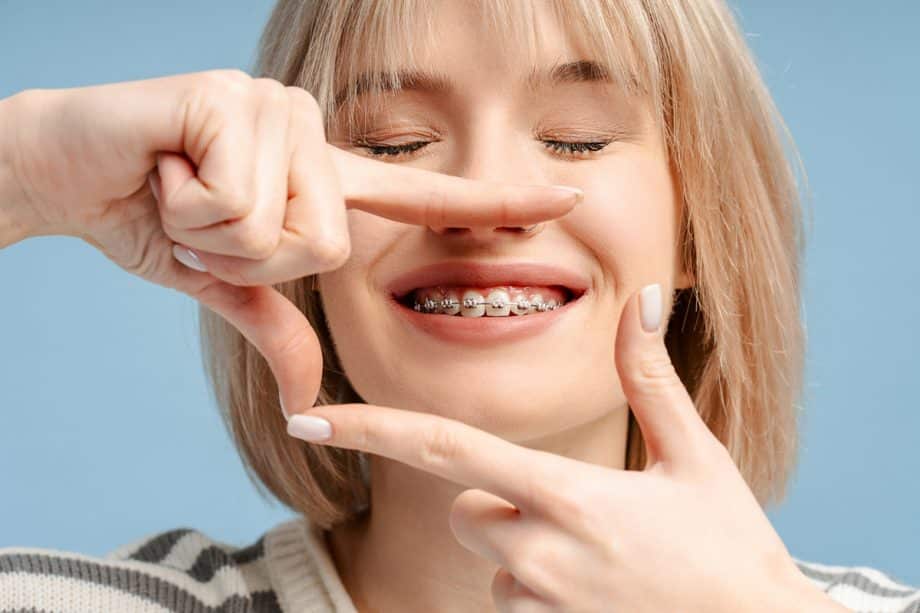The day your braces come off is an exciting milestone. After months or even years of treatment, you finally get to see your beautifully straight, healthy smile. It’s a moment of celebration, marking the end of one phase of your orthodontic journey and the beginning of another. The next, equally important phase is retention. This is where your retainer comes in, and it's the key to protecting the investment you've made in your smile.
A common question we hear from our patients is, "How long will I need to wear my retainer?" It's a valid question, as you're likely eager to know what the future holds for your orthodontic care. We are here to provide a clear and detailed explanation of the retention phase. In this post, we will discuss why retainers are so essential, the different phases of retainer wear, and what you can expect long-term. Our goal is to help you understand how to keep your smile looking its best for a lifetime.
Why Wearing a Retainer Is Not Optional
After your braces are removed, your teeth are not yet permanently set in their new positions. The ligaments and bone that support your teeth need time to remodel and solidify around this new alignment. Without a retainer to hold them in place, your teeth have a natural tendency to shift back toward their original positions. This process is known as orthodontic relapse.
Think of it this way: your orthodontic treatment was the active phase, where we guided your teeth into alignment. The retention phase is the passive, or holding, phase. It’s just as crucial as the treatment itself. Wearing your retainer as prescribed by your orthodontist is the single most effective way to prevent relapse and ensure your results are permanent. Neglecting to wear it can undo all the hard work and time you dedicated to achieving your perfect smile.
At our practice, we provide custom-fitted retainers to ensure a comfortable and effective fit. We work closely with you to create a retention plan that suits your individual needs, providing the support and guidance necessary to maintain your beautiful results for years to come.
The Stages of Retainer Wear
Retainer wear is typically broken down into distinct stages. While your specific instructions will be tailored to your unique case, the progression generally follows a common path. It begins with full-time wear and gradually tapers to part-time, nighttime wear.
Stage 1: Full-Time Wear
Immediately after your braces are removed, your teeth are at their most vulnerable. The periodontal ligaments, which are the elastic tissues that hold your teeth in the jawbone, are still adjusting. To prevent them from pulling your teeth back out of alignment, you will likely be instructed to wear your retainer full-time.
- What "Full-Time" Means: Full-time wear means you should have your retainer in for approximately 22 hours a day. You should only remove it for eating, drinking anything other than water, and brushing your teeth. It’s also important to remove it when playing contact sports or swimming.
- Why It's Critical: This intensive period allows the new bone and tissue to harden around your teeth, securing them in their corrected positions. Consistent wear during this time is fundamental to the long-term success of your orthodontic treatment. Skipping even a few hours can allow for small, undesirable shifts to occur.
We understand that adjusting to a full-time wear schedule can be a challenge. Our team is here to offer tips on cleaning, speaking, and adapting to your new appliance to make the transition as smooth as possible.
Stage 2: The Transition Period (Reduced Wear)
After your teeth have stabilized sufficiently, you will be able to transition to part-time wear. This is a welcome step for many patients, as it offers more freedom during the day. However, it's essential not to abandon your retainer altogether.
- The Shift: Your orthodontist will give you specific instructions on when to make this change.
- What "Part-Time" Means: For most patients, this means wearing your retainer only at night, while you sleep. This amounts to about 8 to 10 hours of wear each night. You may also be given instructions on whether and when you can switch to wearing your retainers just a few nights per week.
- Consistency is Key: Your teeth can still shift, even years after treatment, and the retainer acts as a guard to prevent this. If you notice your retainer feels unusually tight after missing a night, it's a sign that your teeth have already started to move.
This stage is a long-term commitment. Think of it as part of your routine, just like brushing your teeth before bed. It’s a simple habit that provides lifelong protection for your smile.
The Long-Term Commitment: For Life
The most accurate, though perhaps surprising, answer to the question of how long you'll need to wear a retainer is simple: for the rest of your life. While the intensity of wear decreases over time, the need for a retainer never truly goes away.
Our bodies are always changing, and that includes our teeth. Just as our skin wrinkles and our hair grays, our teeth are subject to natural shifting and movement throughout our lives. Factors like age, grinding, and even changes in your bite can cause teeth to move. Wearing your retainer a few nights a week indefinitely is the only way to guarantee your smile remains as straight as the day your braces were removed.
- Protecting Your Investment: Your orthodontic treatment represents a significant investment of time, effort, and resources. Lifelong retainer wear is the insurance policy on that investment. It’s a small commitment that yields a lifetime of confidence in your smile.
- A Simple Habit: Your orthodontist will provide guidance on the ideal schedule for you. It becomes a simple, effortless habit.
- What Happens if I Stop? If you stop wearing your retainer, you run the risk of orthodontic relapse. The shifting may be slow and subtle at first, but over months and years, it can become significant enough to require retreatment. Continuing to wear your retainer is far simpler and more cost-effective than undergoing orthodontic treatment for a second time.
Conclusion: Your Partner in a Lifelong Smile
Achieving a straight, healthy smile is a collaborative journey between you and your orthodontic team. That partnership continues even after your braces come off. The retention phase is critical, and your commitment to wearing your retainer as instructed is the key to preserving your beautiful results.
To summarize, you can expect to wear your retainer full-time, followed by a transition to nighttime-only wear. By embracing this simple routine, you ensure that the smile you worked so hard to achieve will continue to bring you confidence for many years to come.
We are dedicated to supporting you through every step of your orthodontic care, from your initial consultation to your final retention check. If you ever have questions about your retainer or notice any changes in your bite, please do not hesitate to contact our office.
Frequently Asked Questions About Retainers
What should I do if I lose or break my retainer?
Contact our office immediately. The longer you go without your retainer, the more risk there is for your teeth to shift. We will need to schedule an appointment to create a new one for you as soon as possible to prevent any relapse.
My retainer feels tight after I haven't worn it for a day. What does that mean?
A tight-fitting retainer is a sign that your teeth have already begun to shift. This highlights how quickly relapse can occur. You should wear your retainer full-time for a day or two until it feels comfortable again, and then return to your prescribed nightly schedule. If it doesn't fit at all, please call us.
Dr. Suzanne Stock has proudly provided leading orthodontic care to families in Iowa City, Fairfield, Washington, and Williamsburg for many years. She is committed to helping patients of all ages achieve healthy, confident smiles through personalized treatment and dedicated long-term support. Contact us today to learn more and schedule an appointment.

